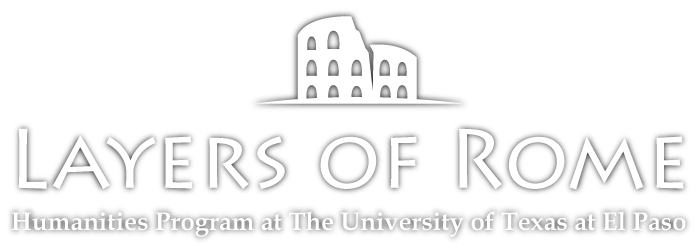The antiquity of Roman culture and Rome’s position in the world make it a world center for the study and preservation of world cultural heritage. Internationally, with the current waves of immigration, cultural destruction and resource decline, there is a new urgency and a greater need for expertise in cultural preservation. As a result, in 2016 while traveling to Rome a group of UTEP Humanities and History students designed and executed a series of creative projects to study cultural heritage and cultural heritage preservation. Students researched and documented the theme of identity and different methods of preservation and revitalization of cultural artifacts, sites and monuments. In addition, they documented new ideas in marketing and new media being utilized to enhance the tourism experience and to raise funds for preservation. Students focused on four sites and monuments: the Colosseum, the Mausoleum of Santa Costanza, the Obelisks of Rome and the harbor city of Ostia Antica.
In preparation for the Rome experience, before leaving for Rome, students visited several museums in El Paso to study how local museums are funded, how they use technology, and how each makes use of space when creating exhibits. This comparative analysis allowed students to develop a set of skills that have wide applications and are transferable to national, international and local situations.
While in Rome students had the opportunity to observe a variety of heritage preservation strategies. They began by investigating the basic collecting practices that first gathered cultural artifacts into the palaces and display halls of the local gentry. In turn, they experienced modern museums and museum light show demonstrations such as the Domus Romana, (Roman House) and the Forum of Augustus. Students had the opportunity to interact with important Italian officials such as the PR Director for the public museums department of Rome. They consulted with current experts and museum directors such as Dr. Darius Arya of the American Institute of Roman Culture, who explained his work in digital preservation and introduced students to the Institute’s ongoing excavations in Rome’s ancient harbor town at Ostia Antica. The group also traveled to Pompeii, where they experienced a huge heritage site now managed by a private company and beset with a host of preservation problems attributable to the large size of the site—an issue students had not encountered previously.
Layers of Rome
